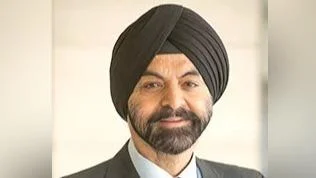Poverty in Lebanon has more than tripled over the past decade, reaching 44% of the total population, according to a new World Bank report released today. Based on a recent household survey covering the five governorates of Akkar, Beirut, Bekaa, North Lebanon and most of Mount Lebanon, the report finds that one out of every three Lebanese in these areas was poverty-stricken in 2022. This underscores the critical need to strengthen social safety nets and create jobs to help alleviate poverty and address widening inequality.
The “Lebanon Poverty and Equity Assessment 2024: Weathering a Protracted Crisis” examines the current state of poverty and inequality in the country. It documents the impact of the economic and financial crisis on households as well as its effect on labor market dynamics. The report builds on a household survey conducted in collaboration with WFP and UNHCR between December 2022 and May 2023, covering Lebanese, Syrians, and other nationals (except for Palestinians in camps and gatherings) in five governorates across Lebanon. Data collected covered demographics, education, employment, health, expenditures, assets, income, and coping strategies.
Now in its fifth year, the protracted economic and financial crisis has compelled households to adopt various coping strategies including cutting back on food consumption and non-food expenses as well as reducing health expenditures. These changes have likely severe long-term consequences. To better reflect these changes in household behavior, the report adopts a new unofficial poverty line developed for 2022. The existing national poverty line from 2012 no longer captures the current consumption patterns or conditions faced by households in Lebanon today.
The report reveals a significant increase in monetary poverty from 12% in 2012 to 44% in 2022 across surveyed areas. It also highlights that poverty is unevenly distributed across the country. Notably, in North Lebanon's Akkar region where most residents are employed in agriculture and construction sectors, the poverty rate reached as high as 70%. Moreover, not only has the share of poor Lebanese nationals tripled to 33 percent from a decade ago but they have also fallen deeper into poverty with the poverty gap rising from 3% in 2012 to 9.4% in 2022. Concurrently, income inequality appears to have worsened among Lebanese.
With the rapid expansion of a dollarized cash-based economy, Lebanese households earning dollars find their purchasing power preserved while those without access to dollars are increasingly exposed to escalating inflation. Remittances have become a pivotal economic buffer increasing from an average of 13% of GDP between 2012 and 2019 to about 30% in 2022 (partly due to a denominator effect) surging by 20% nominally between 2021 and 2022. These financial inflows play an increasingly critical role preventing segments of the population from falling into poverty.
“Lebanon’s ongoing crisis raises the urgency to better track evolving household well-being to develop appropriate policies,” said Jean-Christophe Carret, World Bank Middle East Country Director. "The Poverty and Equity Assessment highlights critical needs such as improving targeting for poor populations expanding coverage depth for social assistance programs ensuring needy households' access essential resources including food healthcare education."
The report also finds that Syrian households have been hard hit by this crisis; almost nine out every ten Syrians were underpoverty line during same period while forty-five percent poor Syrian families had less acceptable food consumption scores majority working-age Syrians jobs engaged low paying precarious informal employment contributing impoverishment food insecurity segmented labor markets mostly mitigated demographic surge caused influx refugees labor market outcomes Lebanese however since twenty nineteen economic crisis led increasingly taking low-skilled jobs shrinking pool better-paying skilled jobs
Recommendations include interventions build resilience ability weather protracted crises looking ahead social safety nets continue playing crucial roles meeting basic needs comprehensive macro-fiscal reforms support price stability providing fiscal space social spending investing human capital building resiliency ensuring expanding access quality education affordable healthcare making public transportation accessible affordable facilitating access schools healthcare jobs initiatives linking job seekers formal matching skills productive employment fostering entrepreneurship small business development improve earning prospects reduce likelihood falling climbing out
###

